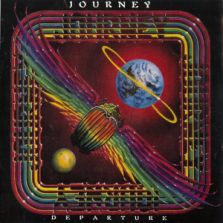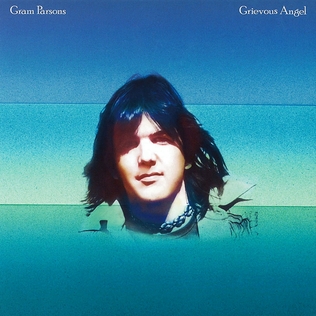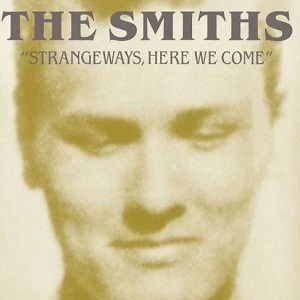“Any Way You Want It” will be familiar to anyone who’s seen Caddyshack more than once; its arena bombast is taken down by “Walks Like A Lady”, a much more subdued track in an R&B shuffle, Neal Schon playing tastier licks than his usual high-speed flurries. Lest anybody forgot about him, Gregg Rolie sings lead on “Someday Soon”, with Steve Perry providing the counterpart, just like on Infinity. It’s a better mix than “People And Places”, where Neal takes the verse against Steve, while the Hammond organ conjures memories of Joe Cocker and Led Zeppelin. “Precious Time” pits “Ain’t Seen Nothin’ Yet” guitar against harmonica, and nearly redeems the side.
Just as side one exploded from the first second, side two gets a great boost from the power-hitting “Where Were You”, which is needed before “I’m Crying”, an overwrought stomping weeper nicely elbowed out of the way by “Line Of Fire”. Here, all the instruments play the same melody as the vocal, in unison, but without sounding ponderous. The bridge still reminds us of “Lido Shuffle”, and we could do without the gunshot effect. The only real departure on the album is the title track, 38 seconds of ambient guitar layers in a different key to the similarly brief track it sets up, the orchestrated after-the-lovin’ plaint of “Good Morning Girl”. Presumably she heard this and determined to take off without eating breakfast, as it’s followed by “Stay Awhile”, shouted from the balcony of his pad at the back of her screeching car. Maybe she came back or he got over her long enough to string together the uncomfortable food metaphors in “Homemade Love”.
Despite having only one real hit single, Departure delivers equal doses of boogie and crooning to please the fans, with plenty of songs they’d take on tour. For its third CD reissue, there were two bonus tracks: “Natural Thing”, a wonderful leftover from the sessions featuring Steve’s best Sam Cooke impression later used as a B-side, and “Little Girl”, the most accessible song from Dream, After Dream, a 1980 soundtrack to a Japanese film nobody has ever seen, ever. Both had appeared on other compilations, but they fit very well here, both contextually and chronologically.
Journey Departure (1980)—3
2006 CD reissue: same as 1980, plus 2 extra tracks

:format(jpeg):mode_rgb():quality(90)/discogs-images/R-5722577-1401424215-2351.jpeg.jpg)



:format(jpeg):mode_rgb():quality(90)/discogs-images/R-3618693-1338574457-6634.jpeg.jpg)



